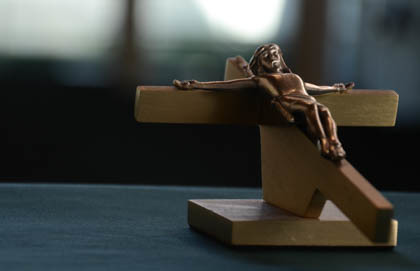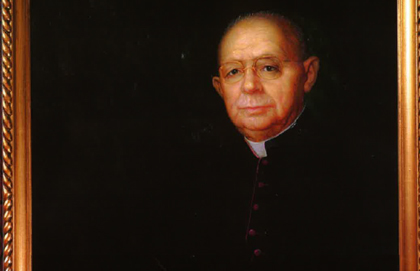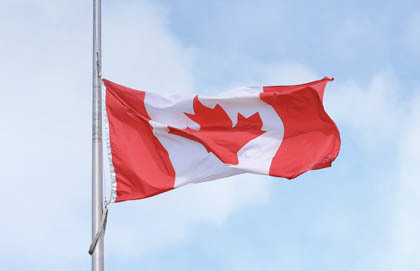When Pope Honorius III approved the Franciscan Order in 1223, his bull Solet annuere decreed that the friars be “meek, peaceable, modest, kind and humble,” and that they be allowed “one tunic with a capuche and if they wish to have it, another without a capuche. And those who are driven by necessity may wear footwear.”
The colour of their habits has changed from grey to brown over the centuries but the brotherhood remains devoted to preaching the Gospel in a loving, caring and practical way.
There are three orders of Franciscans – the Friars Minor (Franciscans), the Poor Ladies or Clares, and the Brothers and Sisters of Penance – generally referred to as the First, Second and Third Orders of Saint Francis. There are three branches of the First Order: the Friars Minor, the Friars Minor Capuchins and the Friars Minor Conventual. They became custodians of holy shrines, including the Holy Sepulchre. A Franciscan accompanied Christopher Columbus on his voyage to the New World in 1492.
The first of the friars to arrive in French North America 400 years ago with Champlain were known as Recollects: Joseph le Caron, Jean d’Olbeau, Denis Jamay and Pacifique de Plessis. A monument to their memory, erected in 1915, stands in Place d’Armes in Quebec City. But most people are unaware of their contributions to the social and religious fabric of North America over the centuries. According to the Vatican yearbook, there are today about 14,000 Franciscans worldwide, 9,000 of them priests. Once, there were about 1,000 throughout Canada, but their numbers have dwindled to about 110 friars in two Canadian provinces. The Province of St. Joseph, headquartered in east-end Montreal has about 70, and the Province of Christ the King, headquartered in Cochrane, Alta., has about 40.
Father Michael Perry, elected head of the Franciscan order in May, says they continue to carve a unique identity in the world. “The whole world is living in a time of contested identity,” he says. “Franciscans are part of the world and we are trying to re-identify ourselves as men of the Gospel, as men who are simple, who live among the poor. We try to understand what is going on in the world to become part of the planet. In this way, we seek to foster the Gospel.”
There is, Perry says, “a great hope and a great energy among Franciscans in Canada, even among those who are older, to reclaim their ministry and to live the Gospel in new ways in a world where changes are taking place. They are seeking the new peripheries that Pope Francis talks about.”
Perry was in Caledon, Ont., in September for an extraordinary Chapter of Mats gathering, where the Canadian friars renewed their common sense of mission. According to Father Perry, Franciscans, like their beloved founder, promote peace, reconciliation and care for the environment.
Friars keep a low profile and don’t normally draw attention to their communities. The few friars that do make the headlines are priests such as Mychal Judge – the chaplain of the New York Firefighters who was declared the first victim of the World Trade Centre terrorist attack; Maximilian Kolbe – who volunteered to go to the gas chambers at Auschwitz during the Second World War if the Nazis spared the life of a Jewish prisoner; and Padre Pio – the contemporary Italian saint who bore the stigmata.
Celebrations marking the anniversary of the Franciscan’s arrival in New France 400 years ago, for the most part, have been like the friars themselves: modest and low key. Montreal’s Roman Catholic Archbishop Christian Lépine acknowledged the anniversary in June at a pageant re-enacting the first recorded Mass in Montreal. In August, Cardinal Thomas Collins celebrated the 400th anniversary of Mass at the Huron-Wendat village of Carhagouha, Ont.
“We like to say Franciscans make history, and the other religious communities, like the Jesuits, write about us,” says Jean-Pierre Duharme, who helped organize the Chapter of Mats. “Other religious communities have a better grasp of self-promotion. Maybe we are naturally shy about talking about ourselves and the work we do, or perhaps it is because we are poor that we have never had the resources to promote ourselves properly.”
Writing in has majestic work The White and The Gold, Thomas B. Costain tells us that when the Recollects arrived in Quebec, d’Olbeau went immediately to a trading post at the mouth of the Saguenay River, where he started a mission, L'Exaltation-de-la-Sainte-Croix-de-Tadoussac, “existing there through a severe winter, living in a birch-bark lodge with the Montagnais, who were particularly primitive in their ways…. Le Caron was consumed with an equal eagerness and attached himself to the Hurons” on the Island of Montreal. The other two were given a concession in Quebec City, Notre-Dame-des-Anges, where according to Champlain, their only task was “to worship God and cultivate their gardens,” which provided food for the fledgling settlement.
Le Caron, who spent time in Huronia, is thought to be the first European to see Georgian Bay. He compiled the first dictionary of the Huron, Algonquin and Montagnais languages. He was assisted in his work by another friar, Nicolas Viel, who in 1625 was the first Recollect martyr, murdered along with a young Huron convert named Ahuntsic at what is today known as Sault-au-Récollet.
Missionaries were drawn to the powerful Bear people of the Huron Confederacy because, as Vancouver historian Peter N. Moogk suggests in La Nouvelle France: The Making of French Canada - A Cultural History, “as an agricultural people, these natives seemed halfway to becoming French, and their sedentary life facilitated instruction. Gathering together prospective converts in a permanent settlement was seen as a prerequisite for success. The Huron’s central location amid the great lakes and their trading network also allowed the missionaries to extend their influence with the Huron’s distant trading partners.”
Although the friars learned much about the Aboriginals, the natives initially were apathetic to Christian teaching, and in 1625 the Recollects gave up their Huron mission. In 1629, the rogue Kirke brothers overwhelmed Quebec, claimed it for the British Crown and burned the Franciscan priory. The five Recollects who had been stationed there, along with 10 employees, went back to France. A few, however, remained and continued to work among the Abenaki in Nova Scotia.
When Quebec was handed back to France in 1632, the Jesuits replaced the Recollects as missionaries. The Franciscans didn’t return until 1670, when five of them rebuilt their convent in Quebec City and opened missions in Montreal and Trois-Rivières. In 1674, they opened a mission in what is today Kingston, Ont.
The first native-born Canadian to become a Franciscan was Claude Pelletier, who was born in Saint-Anne-de-Beaupré and took the name of Brother Didace. Shortly after his death in 1699, several miracles were attributed to him, and according to one historic manuscript, Copie des actes du très dévot Frère Didace, “he has been canonized in the hearts of those who knew him.” But his cause for sainthood has never been taken to Rome.
The Franciscans proved, however, to be a rich stream of adventurers. Father Louis Hennepin, for one, was the first to explore Niagara Falls, which he described as “a vast and prodigious cadence of water that falls in a surprising and astonishing manner.” A Recollect, Anastase Douay, was with LaSalle on his two expeditions to Louisiana.
When the French built the Fortress of Louisbourg, a stronghold on Cape Breton, in 1713, Franciscans ministered to the King’s Bastion Chapel there and waited for the construction of their own parish church, which was never built.
One of the last of the formative Franciscan missionaries, Father Emmanuel Crespel, found his way to Wisconsin in 1728 during the second Fox war between the French and the Meskwaki Nation. As Franciscan historian Herve Blais wrote: “For almost a century, our three convents at Quebec, Trois-Rivières and Montreal were the centres of prayer, spiritual counselling and traditional devotion in the Franciscan practice.”
After the Conquest in 1759, the Franciscans were forbidden from continuing their work in British North America. Their missions were forced to close. Much of the archival material documenting their early years in the country was lost when their priory was destroyed by the British bombardment during the siege of Quebec. After the Conquest, their convent on Notre Dame Street in Montreal was requisitioned by the British for use as a barracks.
Then in 1818, the chapel was turned over to the first wave of Irish Catholic immigrants who came to Montreal to build the Lachine Canal. They dubbed it “The Reggilie.” That building was demolished in 1867. With the death of the last surviving Recollect, Marc Coutant, in 1849, the community again disappeared from Canada. It wasn’t until 1888 when Father Frédéric Janssoone, a French Franciscan from Jerusalem, came to Trois-Rivières that Franciscans again established a presence in Canada. Janssoone started a charitable foundation, the Commissariat for the Holy Land, to raise money for the Franciscans in Jerusalem. He was also instrumental in building the shrine at Notre-Dame-du-Cap, where he spent 14 years as a pilgrimage director.
Father Frédéric was declared venerable in 1984, and beatified in 1988. Impressed by Father Frédéric’s abilities, Montreal Archbishop édouard-Charles Fabre invited the Franciscans to start a French province in Quebec. In 1908, Franciscans from Quebec arrived in Fort Saskatchewan, Alta., but their English-speaking province, Christ the King, didn’t begin until 1930, when Regina’s Archbishop James McGuigan sold his residence to finance their endeavours in Western Canada. Initially, several of the friars taught at Notre Dame College at Wilcox, which was started by Athol Murray, and opened a boys’ school, St. Anthony’s College, in Edmonton (which closed in 1970). A Franciscan, Settimo Balo, helped to establish the diocese of Nelson, B.C., and Franciscans ministered to Japanese Canadians who were interned in British Columbia and Alberta during the Second World War.
“We are divided linguistically in Canada; our provinces are split into East and West, French and English, so perhaps we are not as present in the national consciousness as we should be,” says Rev. Marc Le Goanvic, provincial of the French-speaking community. “Our cultures are changing so fast that fewer and fewer people are receptive to God, to religion and to the consecrated life. The challenge before us is to present the Gospel in a new way to people who are ignorant, indifferent or outright hostile. Our strength is in our simple fraternity. We are brothers in a joyful way, and we accept all people as they are.”
In 2007, the Franciscans left their monastic chapel, which they had occupied for 117 years in downtown Montreal, because they could no longer afford repairs to the building. The land is being sold to a developer who is expected to acknowledge the Franciscan presence in the proposed condominium complex being planned for the site. They are now in a priory in east end Montreal that observed the centennial of its opening on October 4, the feast of Saint Francis of Assisi.
Earlier this year, the last Franciscans in Saskatchewan moved out of their retreat house in Lumsden to consolidate their resources in Cochrane.
Pierre Ducharme, who at 38 is one of the youngest friars, is confident that there will always be Franciscans; but because of the demographics of an aging population, “there will never be as many around as there were in the 1950s. There are no longer that many young people around to draw from. But in general, there have been signs of renewal in Ontario and Quebec in recent years. It is slow, but there is an interest. My focus is on the future, and we have been getting vocations.”
The Western Canadian Province has celebrated five solemn professions in six years and continues to have a handful of friars at various levels of initial formation (one of the only religious communities in Western Canada steadily getting vocations), and recently there has been one solemn profession in the Eastern Province.






